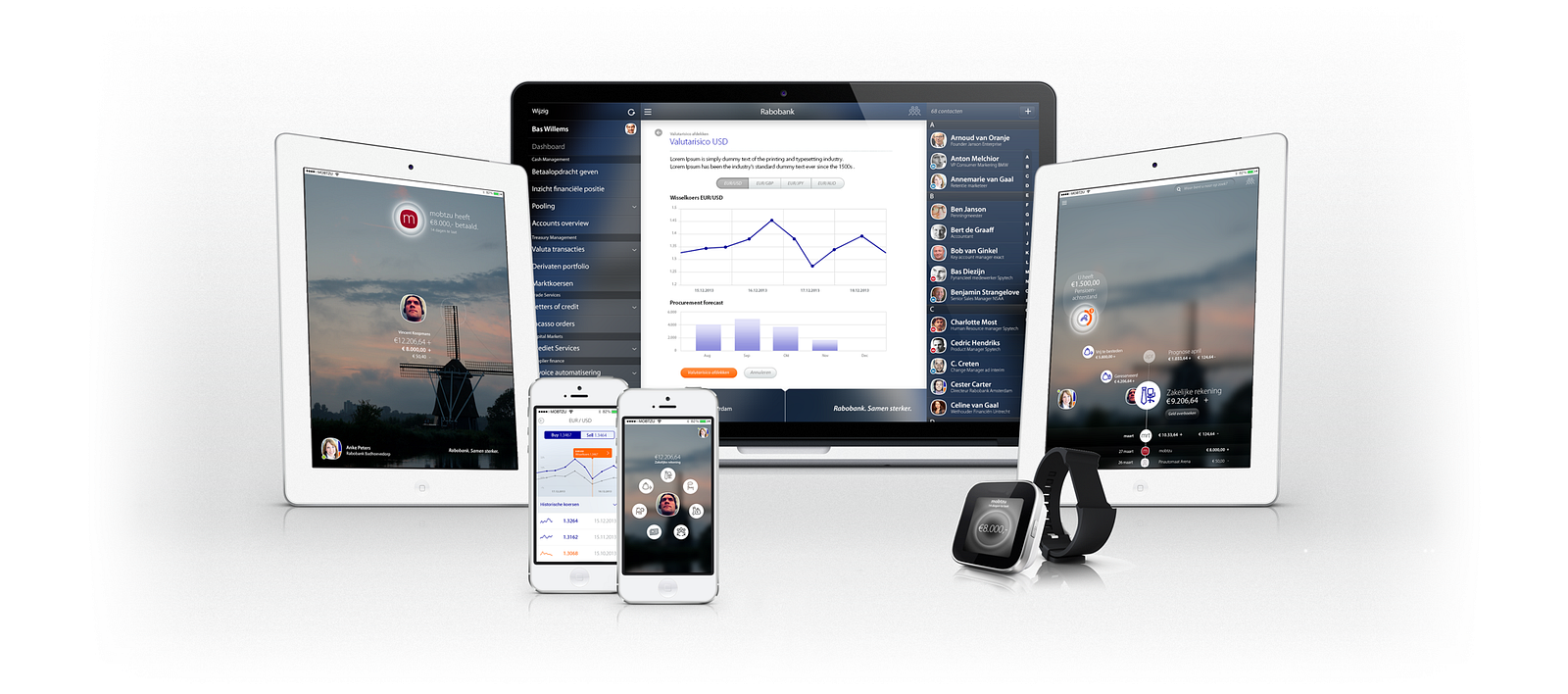About “Developing Senses”
Back in July 2014, the Rabobank started to develop a new Frontend platform based on AngularJS. Both the platform as well as the visual style that was accompanying it at the time was called ‘Senses’. The idea behind it was to make sure it would aid the customers with a Financial Sense.
 The original Senses visual style
The original Senses visual styleVisual styles come and go. The name stuck. The current Frontend Platform of the Rabobank is still called Senses.
The Senses platform was rather revolutionary for its time. The goal was to have one Frontend Platform that would serve the Retail banking application RBO both on the hybrid mobile App, as well as the new banking website. There was a clear architecture that supported the isolated development of the platform, as well as many independent feature teams building the application’s functionality.
To support all this, in 2016, the internal Rabobank Confluence wiki got a space called “Developing Senses”, where knowledge articles were created, blogposts appeared and a Q&A section was added.
Fast forward to 2018. We’re drastically renewing our Frontend stack and working on Senses 2.0. It’s a completely new platform, which is based on Ionic 4, Angular 6, ng-redux, Nx, StencilJS and NodeJS. At the same time, all features built on Senses 1.0 -and therefore AngularJS- need to continue to run without any modifications.
In this publication I intend to write about this new platform: what it is, how we build it, the lessons we learn and have learnt, but also how to use it. I decided to name it after our internal Confluence space: “Developing Senses”
 .
.